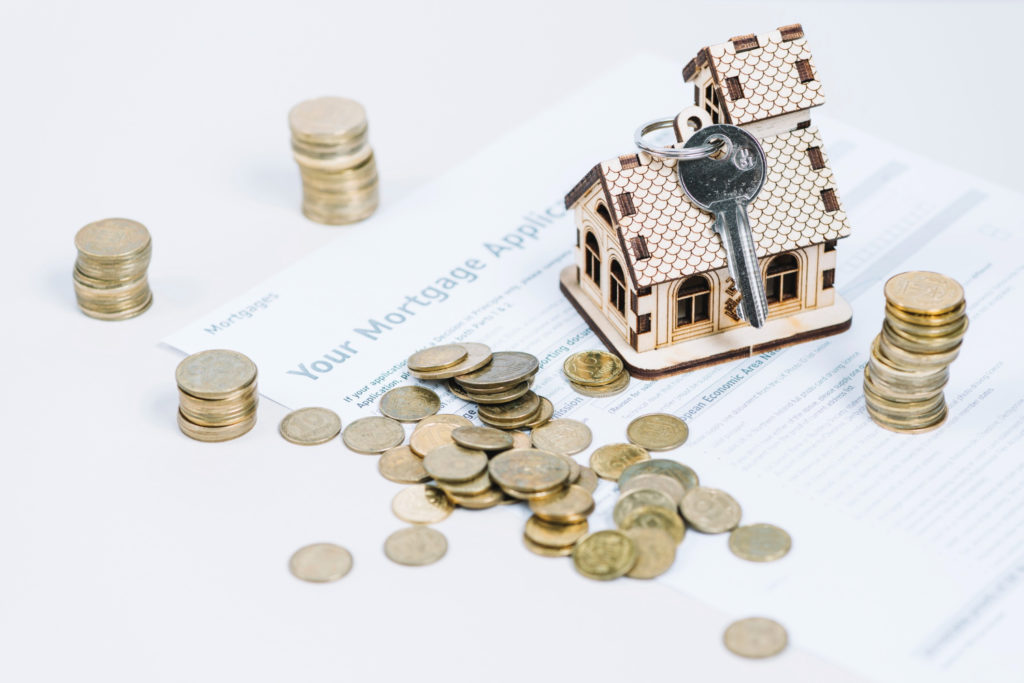Everything You Need to Know About Seller Carry Back Loans
Believe it or not, getting a mortgage from a bank is not the only way to finance the purchase of a home. In fact, seller-financing in real estate and, in particular, seller carry-back mortgages — sometimes called vendor take-back mortgages — can often be a viable alternative to a traditional mortgage loan.
If you’re wondering what a seller carry-back mortgage is, read on below. This is your guide to the carry-back mortgage process.

Key Takeaways
After reading this article, you will know that:
- Seller carry-back mortgages can often allow a home sale to happen when it otherwise wouldn’t, by increasing the maximum price the borrower can afford.
- Carry-back mortgages mean it will take time for you to recoup the money you made in the sale, and come with the risk that the buyer will stop making payments.
- That risk can be reduced by selling your carry-back mortgage note to an investor.
What Are Seller Carry-Back Mortgages?
In real estate, seller carry-back mortgages fall under the umbrella of owner financing. Owner financing — also known as “seller financing” or “providing a holding mortgage” — occurs when in lieu of getting a mortgage from a bank or lender to purchase the property, the owner will finance the home for sale. Once the sale goes through, the buyer is then responsible for making regular installment payments to the seller in exchange for equity in the property.
Though the term “owner carry contract” can sometimes be used to refer to a property that’s completely financed by the seller, with a carry-back mortgage loan, typically the seller agrees to finance just a portion of the home’s purchase price.
In this case, while the bulk of the money may come from a traditional bank loan, the seller might agree to finance an additional percentage of the purchase price, giving the buyer the opportunity to make a smaller down payment.
Once the owner carry terms are agreed upon, they are typically secured by creating a mortgage and a mortgage note. However, these agreements can also be documented with a land contract or deed of trust. Once the documents have been recorded, any seller financing mortgages become an additional junior loan on the property.
How it all works: A seller carry-back mortgage example
Let’s say the buyer agrees to purchase the home for $200,000. However, they are only able to get bank financing for up to $160,000 and they only have $20,000 saved up for a down payment. In this situation, rather than allowing the sale to fall through, the two parties may be able to reach an agreement to seller finance a home loan worth the final $20,000. In other words, the owner will carry the loan of $20,000.
Reasons to consider a carry-back mortgage
Traditionally, seller carry-back mortgages are mostly seen in down real estate markets. After all, seller financing mortgages allow buyers who may not be approved for bank financing the chance to become a homeowner.
In the right circumstances, it can be a win-win situation. The buyer gets the financing they need to buy a home and the seller is able to sell their property, often at a better rate of return than they would get with a different investment of a similar size.
Put simply, properties that allow carry back loans usually garner a higher sale price. For their part, buyers may be willing to pay more if it means they have a viable route to becoming a homeowner. On the seller’s end, they can get more money out of the sale of their investment, plus they can often charge interest to compensate them for the hassle of having to act like a bank.
Potential disadvantages of a carry-back mortgage
The biggest disadvantage of agreeing to carry-back a mortgage is that you are taking a risk. There is a risk that the buyer may stop making regular payments on the home, at which point you would be responsible for initiating foreclosure proceedings.
Additionally, even though you’ve sold your home, if you’re accepting monthly payments, it will take you a long time to recoup your investment.
While it may be nice to have an added source of monthly income, you won’t be able to take the money from the sale of your home and leverage it to buy something else in the same way that you would if you sold to a buyer who had used bank financing.
Selling your carry-back mortgage
Luckily, there is a happy medium where you can offer seller financing in order to find a buyer for your home and still receive a lump-sum payment. You can sell a mortgage note that you carried back to an investor like Amerinote Xchange.
Keep in mind that investors need to see a benefit from buying a mortgage note, which means that they will likely buy it at a discounted price. That said, there are several factors that go into determining how a mortgage note is priced.
Factors that influence the mortgage note sale price
Seasoning: The term “seasoning” refers to the length of time someone has owned a home on a mortgage. Typically, a seller who has received timely payments for a year or more will get a better bid than one who doesn’t have the same proven track record.
Loan-to-value ratio: Since higher loan-to-value ratios represent a greater risk to the investor, sellers with these notes often face steeper discounts.
Interest rate: On the other hand, higher interest rates mean more profit for the investor, so the higher your interest rate is, the lower your discount will be.
Amortization: Shorter amortization mortgage terms signify that an investment will pay off sooner. All else being equal, investors will usually pay more money for loans with shorter terms.
Recourse: Finally, a mortgage note that includes a payor that is an individual person instead of a corporation, like a limited liability corporation, will price the loan more favorably.
Potential fees
Lastly, in a mortgage note sale, there are a few fees that will be incurred. Typically, investors will ask sellers to shoulder these costs, so it’s best to be prepared for that going in. The fees you’ll see are similar to the closing costs when you sell a home to give you an idea of what to expect. They are as follows:
1. Title search and insurance
2. Document preparation
3. Escrow fees
4. Appraisal fees
5. Wire transfer fees
6. Creation of a beneficiary statement
7. Recording the deed
8. Commission fees
What happens to a mortgage note after it’s sold?
Typically, after buying a mortgage note, investors will either hold the loan through maturity or sell all or a portion of the loan to another investor or entity. This is considered whole loan trading, not to be confused with mortgage-backed securities.
Frequently Asked Questions
What difference will a seller carry-back loan make in terms of buying/selling a home?
For the seller, a carry-back loan offers the opportunity to sell faster, and potentially at a higher price. For the buyer, a seller carry-back loan means you may be able to afford a property you otherwise wouldn’t be able to. This is because seller carry-back loans allow for mortgages in some circumstances where a traditional lender would not be willing to get involved.
Do I have to foreclose on a home myself if I hold a carry-back mortgage?
Yes, as the holder of the note, it will be your responsibility to foreclose on the home if the buyer stops making payments or otherwise breaks the terms of the loan. If that isn’t an appetizing option for you, consider selling your note to an investor (see next question).
What can I do if I sell a property on a carry-back mortgage but need cash now?
If you hold a seller carry-back note but need a large amount of cash now, or you’re no longer willing to tale the risk of depending on monthly payments from a borrower, you have the option of selling the note to a loan acquisitions company like Amerinote Xchange. Selling your note means you will have to take a cut on the total amount paid out, but you will have cash in your pocket immediately.




I inherited a carry back mortgage contract from my father and want to maybe sell it. Probate is done. How do I find out what this is worth? Do I have to tell the person making payments or do you do that? I am moving out of the country and looking to do this as quickly as possible.
Hi Keith:
Thank you for your inquiry. To answer your questions:
1. You can find out the value of the note at this links
https://www.amerinotexchange.com/sell-mortgage-note/
https://www.amerinotexchange.com/what-we-buy/
Short answer is that the average note will sell for around $0.65 to $0.95 cents on the dollar, depending on the characteristics of the asset (borrower credit, property value, clean payment history, clean title, etc.).
2. As far as letting the borrower know that you are selling the seller carry back mortgage note, that is up to you, as you are technically the lender. That being said, you can do it yourself or we can handle it for you with your written authorization (which will occur if you sell the note to us). It is recommended that you initiate the note sale process and wait for the closing date to be scheduled before you mention anything to the borrower (about a 2-3 week process in all). The reason we suggest this is that there are many variables that can change the course of the deal very quickly (positively or negatively). You want to make sure the funds are locked and loaded before telling the borrower about the assignment. The last thing you want to do is tell the borrower you are selling it and then 2 weeks later tell the borrower you are not selling it. It rocks the boat too much and spooks the borrower. You want to handle with care.
If you are ready to get a quote and take the first exploratory step, please complete the submission form online at this link: https://www.amerinotexchange.com/mortgage-real-estate-quote/
I hope this is helpful.
Thanks for the insight in this article. I am confused. What is the difference between a mortgage note and a land contract? We are selling a house for my mom and I was told to do a land contract instead of a mortgage note. Which one should we do? Are the costs different? Also, can we sell a land contract when it is created?
Harry –
Thank you for your questions. There is a lot to break down here so let’s go step by step.
1. The difference between a land contract vs a mortgage note is ownership of the property. If you sell a property and create land contract whereby the property buyer pays you back on a payment plan (or a loan), the property buyer will not own the property until the loan is paid in full. You will. Once the loan is paid in full, you will issue title of the property to the buyer. This means that if the buyer stops paying, in most cases, it would be treated as an eviction instead of a foreclosure (depending on state laws which you should run by an attorney). That is the advantage of a land contract. But… you will be responsible for taxes on the property through out the life of the loan. Some people do not find this attractive. Others do. It depends on your needs and investment appetite. A mortgage note will give the ownership and property rights (under the law of the state in which the property resides) to the property buyer. Thus, the property buyer is responsible for all things pertaining to the property. You will be a lien-holder on title at that point, not the property owner. If the buyers defaults on payments, you expertise the state’s foreclosure process to remedy the situation.
2. Costs are not that different although there are certain taxes that are triggered when you sell a land contract in state like Oregon and Washington. Note buyers usually find that a mortgage note is a more attractive asset to purchase than a land contract but that is just from our experience. Your experience may vary.
3. You can sell a land contract once it is created…. At least to us.
Here are some links that will shed light on this request.
How does a land contract work? https://www.amerinotexchange.com/how-does-a-land-contract-work/
Land contract quote request: https://www.amerinotexchange.com/mortgage-real-estate-quote/
Harry – this is not legal advice and should be used for informational purposes only. You should definitely run this by an attorney before putting pen to paper.
Good luck in your endeavors.